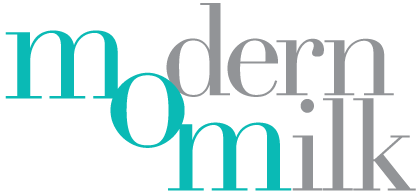Save the Nipples
Anyone who has experienced nipple pain while breastfeeding will be the first to tell you that the pain is no joke! I once had a client who designed a shirt that read “Save the Nipples.” When I was nursing my daughter in her first few days of life, I would begin crying at the thought of feeding her. As I latched her my toes would curl in excruciating pain and I would sob in pain and guilt through the duration of our feed. The challenge with nipple pain is that you must continue feeding your baby ever 2-3 hours around the clock, so the pain is experienced repeatedly. If you are expecting a baby or currently nursing a baby, you’ll want to continue reading.
Prevent the Pain
The most effective way to conquer nipple pain associated with breastfeeding is to prevent the pain and damage entirely. You can do this by taking a prenatal breastfeeding class before baby arrives. Typically, nipple pain is caused from an improper latch, hold, or technique. When you and your partner enroll in a breastfeeding course before baby arrives, you will arm yourself with the knowledge to latch baby correctly before your first attempt. You will also learn that significant pain while breastfeeding is not normal and can be fixed through the help of your local lactation consultant.
Stop the Pain Quickly
In the breastfeeding course I teach at Modern Milk, I remind expectant moms that nipple pain while breastfeeding is not normal or expected. When you latch baby, if you can rate your pain higher than a 2 on a pain scale of 0-10, than you need to seek immediate help by a lactation consultant. You may experience slight tenderness and a pull tug; however, breastfeeding should not be painful. Nipple pain typically peaks about day 3-4 post-partum. Often, the pain can be fixed with a slight position and latch adjustment. Once the latch is corrected, you can care for your nipples with some of the following remedies.
Tender Nipple Care
Nipple pain and damage can begin with slight tenderness and worsen to blisters, bleeding, and cracks if an incorrect latch is not addressed. The first line of defense for tender nipples is simply expressing a small amount of your breastmilk and rubbing it onto your nipple and areola. Breast milk is antibacterial, antiviral and is filled with beneficial healing properties. You can also apply a warm water compress over your nipples after each nursing session, this can help relive some pain and tenderness.
The next line of defense with slightly more damage will be applying a thick layer of lanolin or nipple butter over your nipple after you have finished feeding baby. Wearing a breast shell over your breast (a plastic cup with a hole for your nipple designed to prevent clothing from rubbing on your nipple) can help prevent pain and damage caused by friction. Another natural remedy to help prevent nipple cracks is to lather olive oil over your nipples after you have fed baby.
If your nipple pain and damage have progressed beyond “slightly tender” and may look as though there is a line of blisters or bleeding, you can purchase breast hydrogels and apply them over your nipples after each feeding. Just make sure you frequently change the hydrogels and use them as recommended to help prevent infection from improper use. Another effective, yet expensive, product available to purchase are Silverette Cups. Silver is a natural antimicrobial, antifungal, and antibacterial metal that can also reduce swelling and inflammation. You can wear these metal cups over your nipples to help heal significant damage and prevent infection. Make sure if you use Silverette Cups, you follow the directions and use independently of other nipple remedies.
Significant Nipple Damage
There may be a time where you experience significant nipple damage and cracking. If your nipples look severely damaged, you may want to reach out to your doctor or lactation consultant to get a prescription for medicated APNO (all-purpose nipple ointment) to help prevent infection and mastitis. For damaged nipples that appear “beyond repair” you can apply a thick layer of Medihoney to your nipple after nursing. Medihoney is a wound care dressing made from sterilized, medical grade honey. It’s best to only use this as directed by a professional as ordinary honey is not recommended for infants under 1 year of age.
-Katie Kunz, RN, IBCLC
References
Ciftci, B., Avsar, G., Aydın, E., & Ozlu, Z. K. (2018). Assessment of the Effect of Nipple Care with Honey on Nipple Cracking. International Journal of Caring Sciences, 11(3), 1881–1889.
JE, Lochner. (2009) Clinical inquiries: Which interventions are best for alleviating nipple pain in nursing mothers? Journal of Family Practice, 58 (11), 1533-7294
Rennie AM, Cowie J, Hindin PK, & Jewell S (Eds.). (2009). The management of nipple pain and/or trauma associated with breastfeeding. Australian Nursing Journal, 17(2), 32–35.



